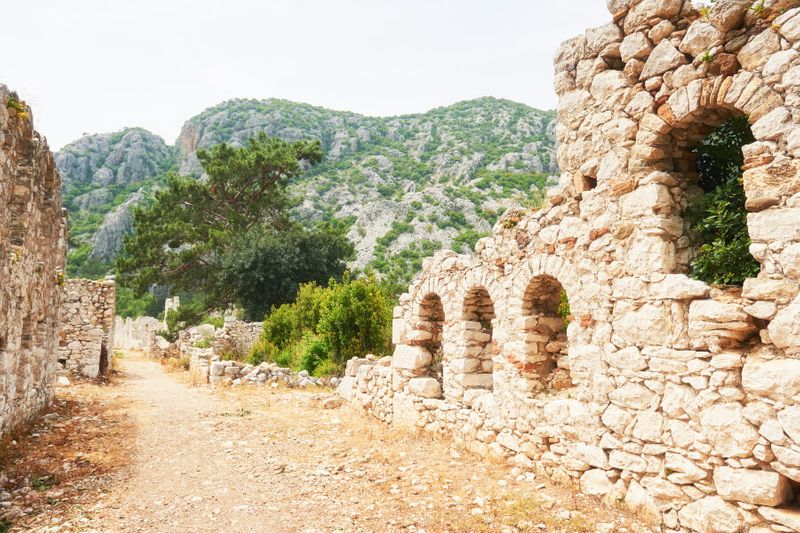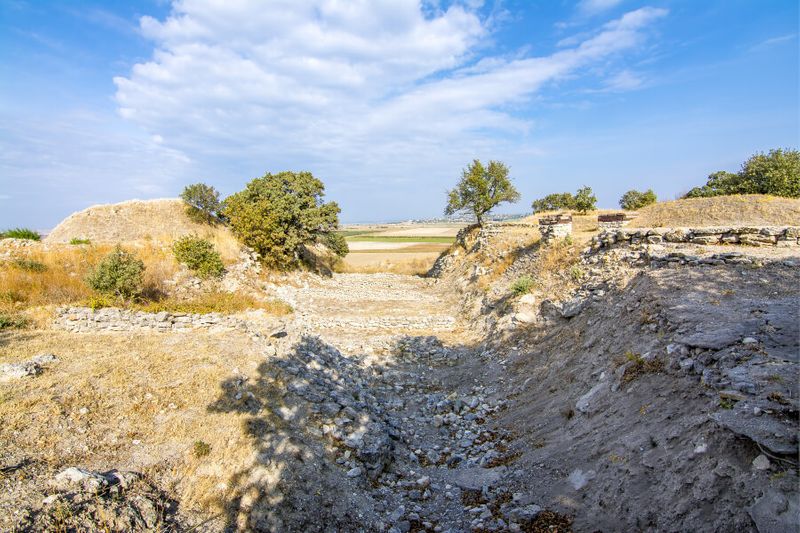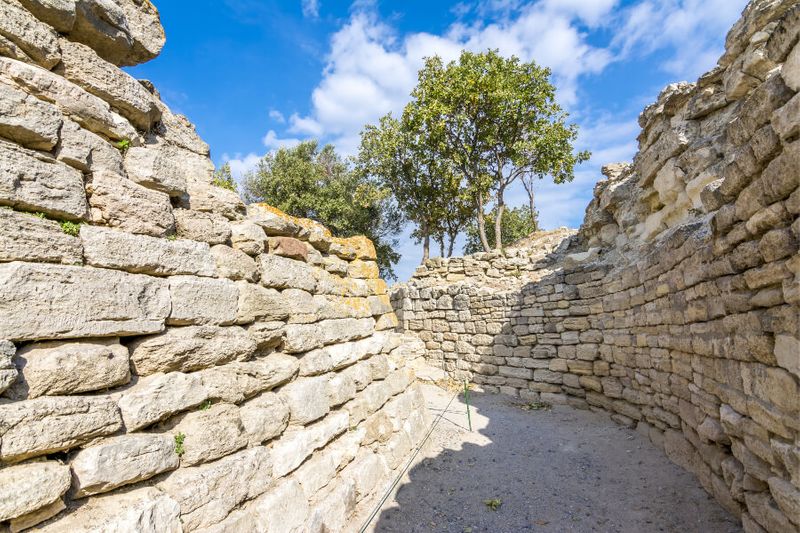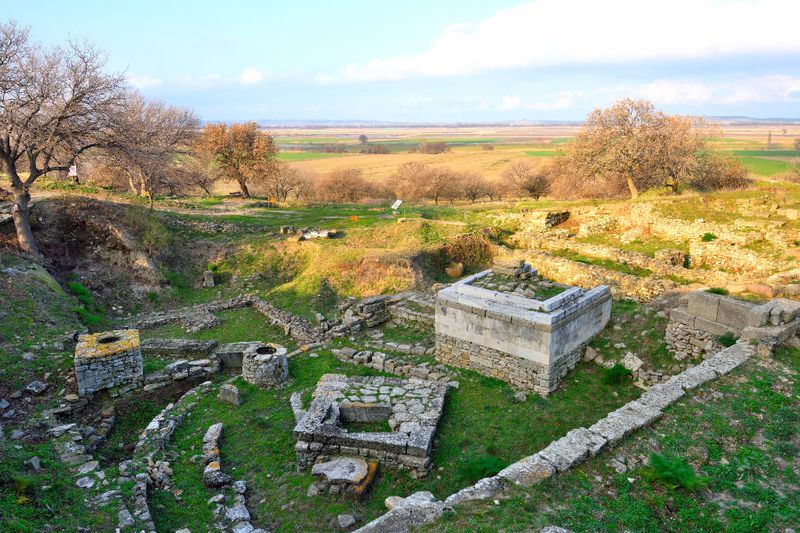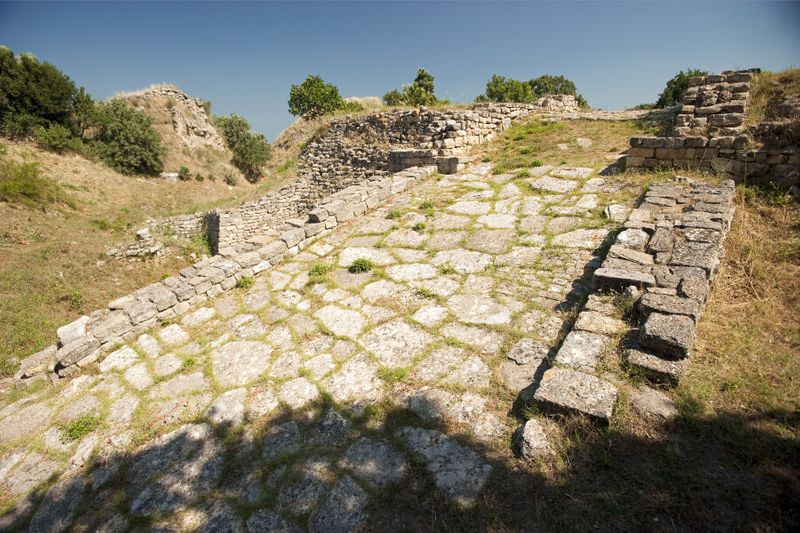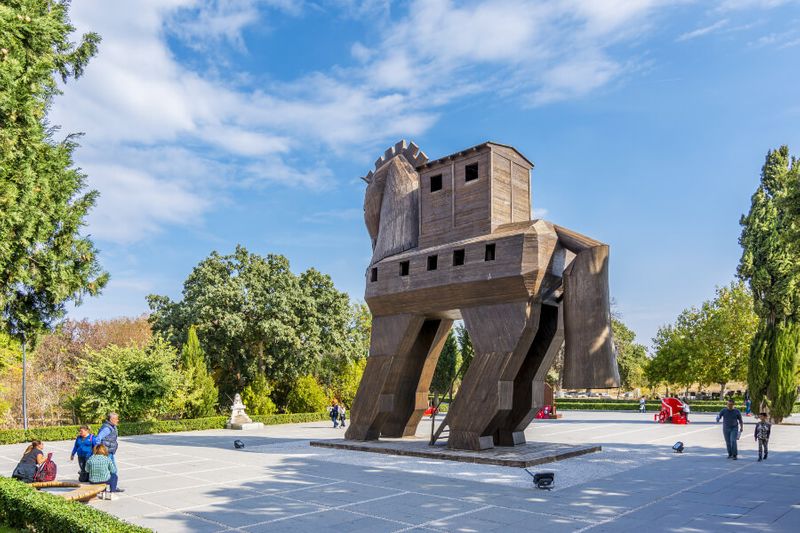Follow in the illustrious footsteps of Alexander the Great and pay homage to the most famous battle in history
Encased in legend and romance, just like the lost city of Atlantis, Troy was thought to be mythical. And so its discovery was extraordinary: burned walls, ruined towers and the remains of ancient houses, all set into a hill overlooking the Trojan plain. Today the site remains a powerful link to the civilisation that inspired some of our greatest artistic and literary works.
Troy is located in presented day Hisarlık on the northwest coast of Turkey. Less than 5 km from the Dardanelles, it is likely that this strategic location between Asia and Europe was the impetus for the Trojan War. Of course, Homer’s epic poem the Iliad recounts that the battle was sparked by the ‘theft’ of Helen, King Menelaus’ wife and the most beautiful woman in the world.
Schliemann's Trench
When you enter the site you will see a cross-section carved into the ruins. It shows multiple layers correlating to different eras in Trojan history. As one Troy rose and fell, a new city would be erected on top of it, preserving the layers of history below. The Siege of Troy as immortalised by Homer in the Iliad took place around the twelfth century BCE, which correlates to Troy VI (Homer’s Troy).
City Walls - Troy VI
Follow the path through the Pithos Garden strewn with ancient pottery and terracotta pipes. At the end of the gardens are the ancient walls of Troy VI. The walls are significant because a weaker section discovered by archaeologists was accurately described in the Iliad, suggesting some truth to the legend. Also consistent with the epic poem are huge limestone blocks some 6m high and 5m thick, fortifying the city’s defences. However, there is evidence that the city’s walls failed many times in its long history by means of fire, ballistics and earthquakes.
North East Defensive Tower - Troy VI
In the northeast of the site stands an impressive defensive tower. At over 7 m, it would have been massive in ancient times. Rest awhile at the viewing platform and look out at the plains below. From here it’s easy to imagine the frantic battle preparations and the Greeks amassing beyond the city walls.
Ramp - Troy II
The other noteworthy remains are from periods either side of Homer’s Troy. Don’t miss the well-preserved ramp which leads into Troy II. Here a treasure trove of precious jewellery and weaponry was discovered, mistakenly thought to be the Treasure of Priam. The nearby Roman Odeon from Troy IX is also worth a look; it was built by Emperor Augustus to legitimise his spurious Trojan pedigree.
Wooden Horse
At the end of your visit, take a moment to explore the reconstruction of the Trojan horse and ponder its role in the battle. The Odyssey recalls that a horse was left by the Greeks in tribute to Poseidon, God of the sea, earthquakes and horses.
Today we remember the story of the soldiers hidden within who flung open the city gates. But was it truly the means by which the city fell or did it represent an ancient siege weapon, or perhaps even a catastrophic earthquake?
